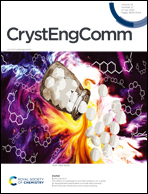Double-walled carbon nanotube assisted phase engineering in CoOxSy complexes for efficient oxygen evolution reaction†
Abstract
Sluggish electron kinetics in the oxygen evolution reaction (OER) is one of the main factors restricting the development of hydrogen production technology from electrical water splitting, while the key to breaking through the bottleneck is to develop low-cost and efficient OER electrocatalysts. Here, a scheme for regulating the phase of electrocatalysts using carbon nanotubes is proposed, which significantly boosts the OER activity of transition metal complexes, exhibiting comparable electrocatalytic performance to noble metals. In this process, an organic complex of cobalt was combined with carbon nanotubes that prevent the catalyst from crystallizing during vulcanization, with sulfur atoms replacing some of oxygen atoms to further modify the active center. The as-fabricated amorphous CoOxSy complex showed excellent OER activity with a unique electronic structure, resulting in overpotentials of 290 mV and 330 mV at current densities of 10 mA cm−2 and 100 mA cm−2, respectively, and a Tafel slope of 50.8 mV dec−1. Moreover, the participation of carbon nanotubes further enhanced the electrochemical stability of the catalyst, which exhibited consistent performance in stability tests up to 60 hours. The results demonstrate the potential of carbon-based amorphous transition metal complexes as highly active electrocatalysts and provide a new possibility to design efficient catalysts by phase engineering.



 Please wait while we load your content...
Please wait while we load your content...